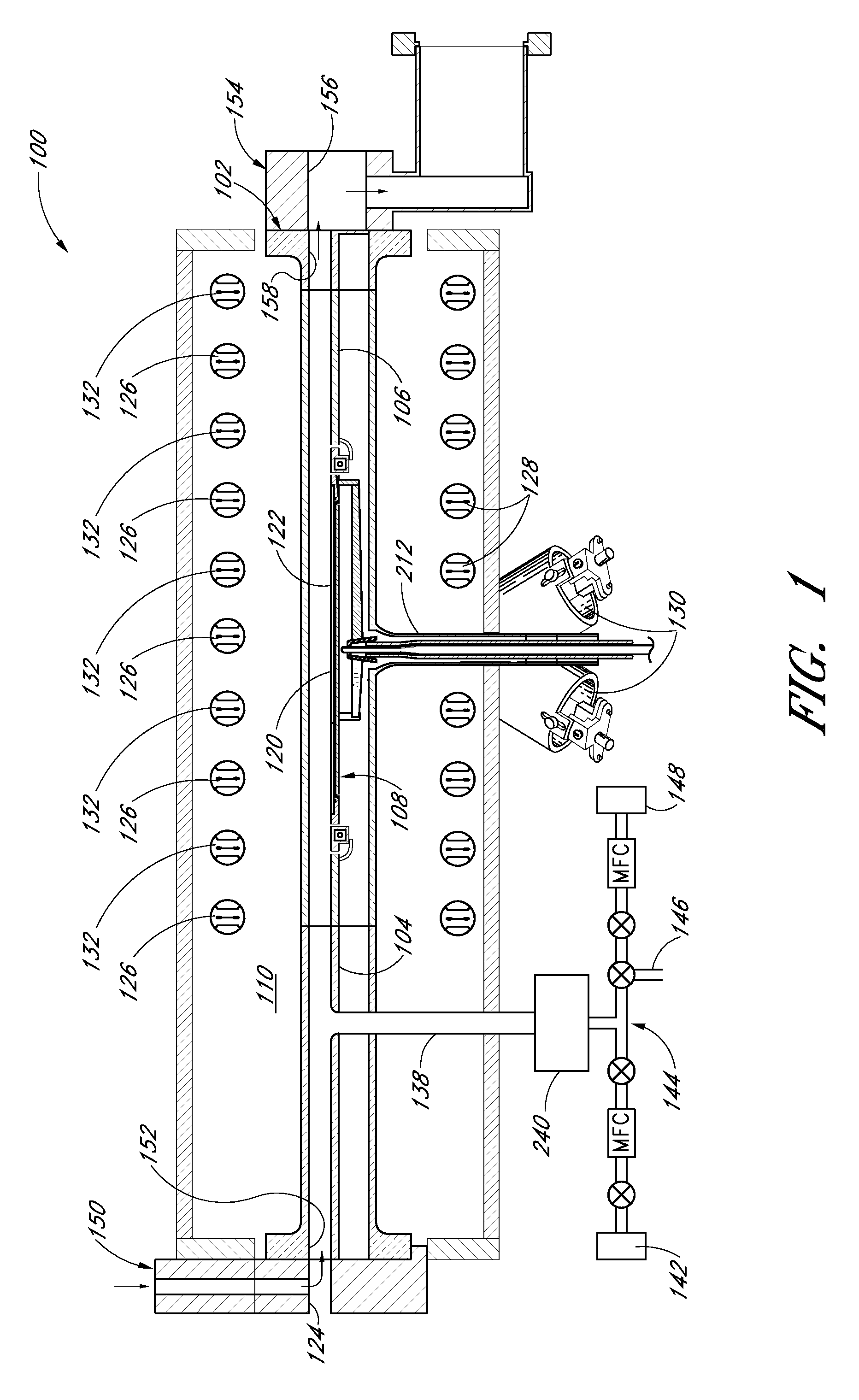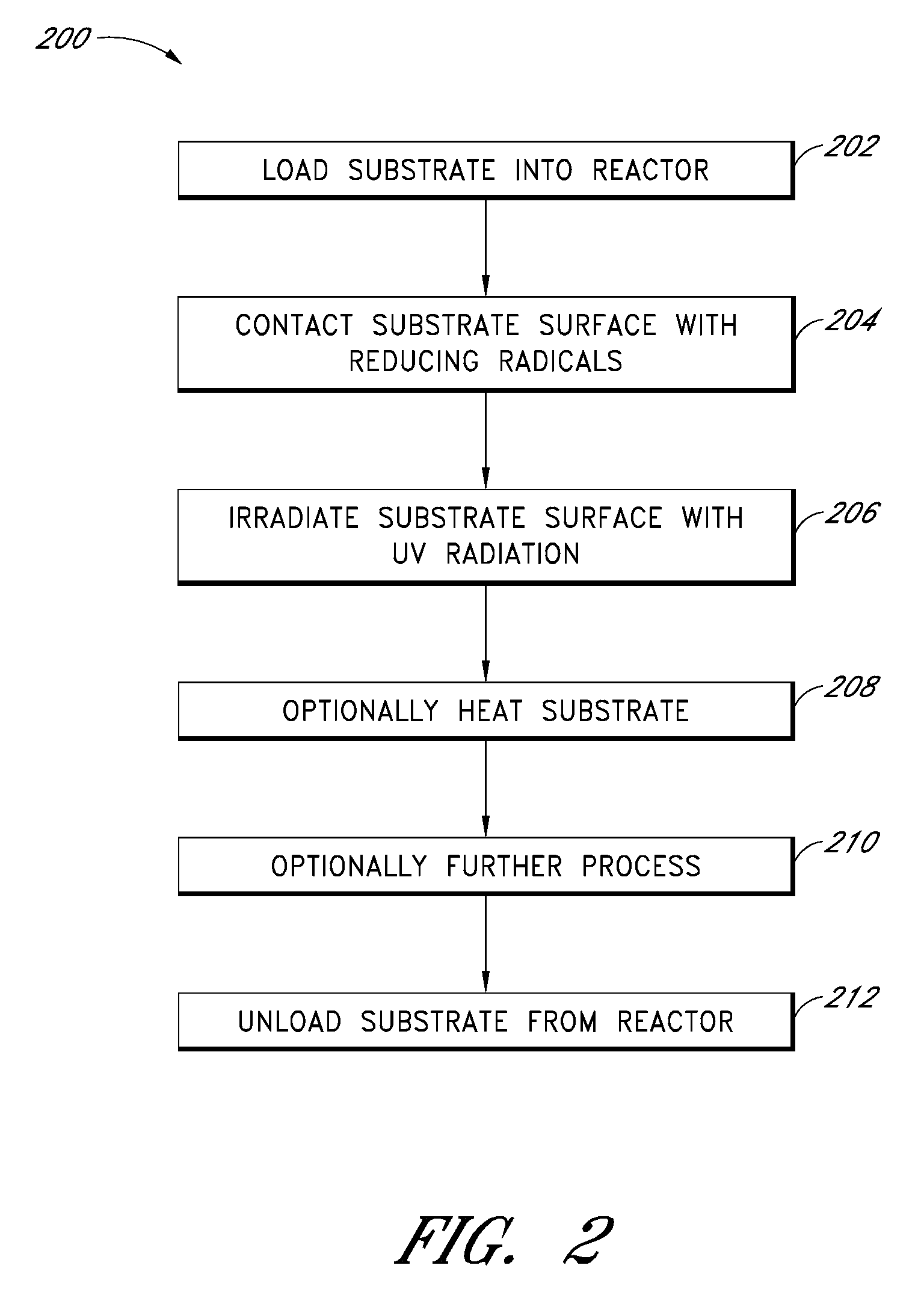Low-temperature cleaning of native oxide
a technology of native oxide and low temperature, applied in the direction of cleaning using liquids, chemical/physical/physical-chemical processes, energy-based chemical/physical/physical-chemical processes, etc., can solve the problem that the concentration of hydrogen radicals provided by commercially available plasma sources is insufficient to provide acceptable cleaning rates, and achieves reduced device size translation, reduced device components, and reduced vertical dimensions
- Summary
- Abstract
- Description
- Claims
- Application Information
AI Technical Summary
Benefits of technology
Problems solved by technology
Method used
Image
Examples
Embodiment Construction
[0029]The disclosed method, apparatus, and systems are useful for cleaning oxide from a surface of a substrate during semiconductor fabrication using radicals, for example, remotely generated, and UV radiation at reduced temperatures. For silicon surfaces, the cleaning provides a silicon surface terminated with hydrogen, a passivated surface stable to about 500-550° C. At higher temperatures, the hydrogen desorbs from the surface. The passivated surface resists oxidation.
[0030]FIG. 1 illustrates a preferred embodiment of a reactor 100 useful for cleaning native oxide. The illustrated reactor 100 is a single-substrate, horizontal flow, cold-wall reactor. Reactors of this type provide improved process control and uniformity compared with batch systems. Such reactors may process only a single, or at most, a handful of substrates at a time, however, reducing throughput. In a batch processing configuration, the substrates are preferably laterally arrayed, facilitating irradiation of the ...
PUM
| Property | Measurement | Unit |
|---|---|---|
| temperature | aaaaa | aaaaa |
| temperature | aaaaa | aaaaa |
| temperature | aaaaa | aaaaa |
Abstract
Description
Claims
Application Information
 Login to View More
Login to View More - R&D
- Intellectual Property
- Life Sciences
- Materials
- Tech Scout
- Unparalleled Data Quality
- Higher Quality Content
- 60% Fewer Hallucinations
Browse by: Latest US Patents, China's latest patents, Technical Efficacy Thesaurus, Application Domain, Technology Topic, Popular Technical Reports.
© 2025 PatSnap. All rights reserved.Legal|Privacy policy|Modern Slavery Act Transparency Statement|Sitemap|About US| Contact US: help@patsnap.com



